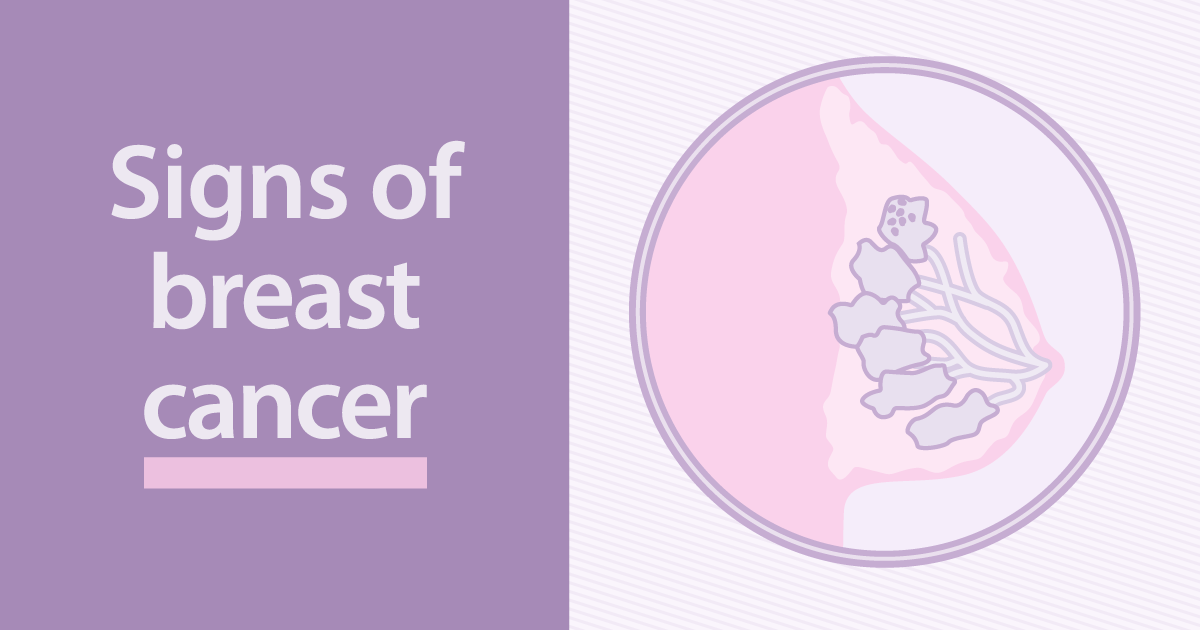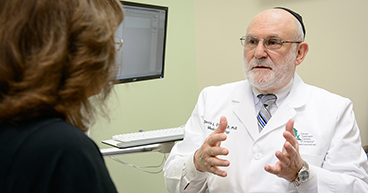
If your tire goes flat, a warning sign may appear on the dashboard. If your smartphone battery is low, it may send you an alert. The human body has a similar alarm system. From hives and rashes to pains, fever and vomiting, your body has its own way of letting you know something’s wrong. Some signs are more subtle than others. Breast cancer is one disease that often causes a variety of more obvious signs and symptoms of breast cancer that may alert you to a potential concern to share with your doctor. Since early detection is key, doctors recommend that women know what these symptoms are, and learn how to spot them.
Early signs and symptoms
A new lump in the breast or underarm is one such sign. “In general, if a woman is premenopausal and has a lump that persists without change across different phases of a second or third menstrual cycle, this area must be evaluated,” says Dr. John McKnight, Medical Oncologist at the Breast Center for Advanced Oncology at our hospital near Atlanta. “There are many changes in breast tissue during the normal course of a monthly cycle— some tissue may be enflamed, and cysts may appear. But if a lump appears and stays, then a physician should evaluate it. For postmenopausal women, any lump should be evaluated.”
Women should also be aware if their breasts become asymmetrical—meaning one breast appears firmer or larger than the other. “It could mean a mass is pulling the breast to the chest wall,” says Dr. Haritha Pabbathi, Medical Oncologist who treats patients at the Breast Center for Advanced Oncology at our hospital near Atlanta. “This needs to be checked out by an OB-GYN or a primary care physician.”
Breast cancer may also change the appearance of the nipple. “If your nipple usually appears normal and begins to look inverted, that’s a concern,” says Dr. Pabbathi. “There could be a lump pulling your nipple inward.” Cancer may affect the nipple in other ways, too. “If you’re not lactating, there should be nothing flowing from the nipple,” says Dr. McKnight. “Any discharge, especially blood, needs to be checked out. It may be inflammation or an infection, but it should be seen by a doctor.”
Skin changes, especially redness or inflammation in the breast’s skin, may be indicative of a less common type breast cancer, called inflammatory breast cancer. In some cases, the skin may have ridges or appear pitted, like the skin of an orange. “Just as the skin of an orange has little holes, the breast skin has little holes, too,” says Dr. Pabbathi. “This may indicate a type of breast cancer where there is no lump.”
Talk to your doctor
When breast cancer spreads to lymph nodes under the arm or around the collar bone, a lump or swelling often develops in the area. Dr. Pabbathi says women should pay special attention to these changes. “It may mean the cancer has spread,” she says. “This should also be checked by a health care provider.” Other possible signs include general pain in any part of the breast, irritated or itchy breasts, changes in sensation (feeling tender or warm) and peeling of the nipple skin.
Of course, any of these symptoms may be the result of conditions other than breast cancer, and not every breast cancer causes noticeable signs and symptoms. That’s why it’s important to discuss obvious changes in your breast health with your doctor, and make regular screenings and doctor visits a priority.
Breast health starts with knowing how your breasts normally look and feel. “I try to emphasize to patients that they should be very familiar with their own breast tissue,” says Dr. McKnight. “As a doctor, it’s always better to have a patient be aware of her body and know when something feels unusual. That’s why we advise all women to do breast self-exams. If you feel something unusual, you should have it examined by a physician.”
When breast cancer is caught early, more options may be available to treat it. But being aware of your body and doing regular self-exams is only part of prevention and early detection. Regular mammograms and other screening tests are essential to detecting breast cancer, especially in its early stages, even before symptoms appear.
“We want to find breast cancer before there are any signs,” says Dr. McKnight. “We want to diagnose the disease before it has significant opportunity to spread.”

